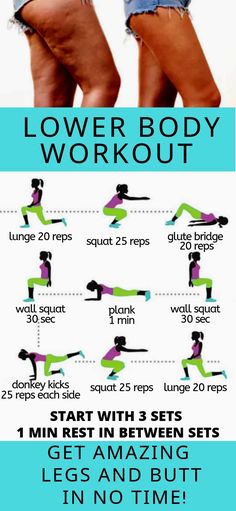
Circuits classes combine strength training with cardio activities. Circuits classes allow participants to exercise at their own pace. They focus on short bursts and are designed to be easy for anyone who is interested. To test the classes, GO Gateshead members can sign up to a free trial class. Individual classes can be purchased if you do not have an GO Gateshead membership. The GO Gateshead offers a combination of the best of both worlds, including their fitness classes.
Circuit training is great to anyone, regardless of their fitness level. The classes are easy to follow and accessible for all fitness levels. As you get stronger, the intensity of the circuits will increase. You can adjust how long you spend at each station depending on your fitness level and goals. A trainer will be available to assist you during the classes. Comfortable exercise clothes and sneakers are recommended.

A circuit class usually contains eight to ten activities and the length of each class will vary depending on the goals. The circuits can be completed between three and five times. The types of exercises included in a circuit depend on your goals, mobility, and experience level. A professional soccer player may need to be fast and agile, but a beginner may need to get a good cardio workout. It is important to find the class that best suits your needs.
A class in integrated circuits is a great introduction to many different types of fitness. You will quickly be able achieve your fitness and health goals by using a circuit. These classes will help you lose weight, tone up, gain muscle, tone your body, and improve your general condition. A circuit training class can help you reach all of your physical and mental goals. They are a great way for you to improve your overall well-being.
A circuits class combines high intensity exercises and group exercise. It's an excellent way to lose weight or build stamina. Although it can be difficult for beginners because most of the exercises require high intensity, it is one of most effective ways to reach your fitness and weight loss goals. You can choose what level of exercise you like and get a circuits class that is just right for you. In circuits classes, you'll learn both basic circuits and advanced techniques.

Circuits classes can be enjoyed by all levels of fitness. Circuits are great for building lean muscle mass, tone your existing muscles, and can be varied. Personal trainers can tailor the workouts to your personal fitness goals and needs. This type of workout is perfect for people who get tired easily, can't exercise alone, have limited space, or are not able to do it all. They can also increase their stamina and heart rate, which can be beneficial for their overall health.
FAQ
What is the difference among a virus or a bacterium and what are their differences?
A virus, a microscopic organism, is incapable of reproducing outside its host cell. A bacterium (or single-celled organism) reproduces by splitting itself into two. Viruses can be as small as 20 nanometers, while bacteria can grow up to 1 micron.
Viruses can be spread by contact with bodily fluids containing infected substances, such as saliva, urine and semen. Bacteria is usually spread directly from surfaces or objects contaminated with bacteria.
Viruses can enter our bodies through cuts, scrapes, bites, or other breaks in the skin. They may also get into the body through the nose and mouth, eyes, ears or rectum.
Bacteria may enter our bodies through cuts and scrapes on our skin, burns, insect bites, and other wounds. They can also enter our bodies from food, water, soil, dust, and animals.
Both bacteria and viruses can cause illness. However, viruses cannot reproduce within their hosts. Viral infections can only cause diseases in living cells.
Bacteria can spread within the host and cause illness. They can even invade other parts of the body. We need antibiotics to get rid of them.
Why does our weight change as we get older?
How do I know if my bodyweight changes?
Weight loss occurs when there is less fat than muscle mass. This means that calories must be consumed at a rate greater than energy. The most common cause of weight loss is decreased activity levels. Other factors include stress, illness and pregnancy. If there is more body fat than muscle mass, then weight gain can occur. It occurs when people eat more calories than what they use in a given day. There are many reasons for this, including overeating and increased physical activity.
The primary reason we lose weight is that we consume less calories than what we burn. Exercise regularly increases your metabolism rate, which allows you to burn more calories every day. This doesn't necessarily mean we will lose weight. What matters is whether we are losing fat or building muscle. If we are burning more calories than what we eat, then we will lose weight. But, if we consume far more calories than what we burn, then we actually store them as fat.
As we grow older, we tend to become slower at moving around and therefore we don't move as much. We also tend have less food to eat than when our children were young. Therefore, we tend to put on weight. We also tend to look larger because we have more muscle.
There's no way to tell how much weight you've lost unless you weigh yourself every week. There are many ways to determine your weight. You can measure your waist, hips and thighs as well as your arms. Some people prefer using bathroom scales and others prefer tape measure.
If you want to track your progress, you should try weighing yourself once a week and measuring your waistline once a month. To track your progress, you can also take photos every few months of yourself to see how far it has come.
You can also look up your height, weight and body measurements online to determine how much you weigh. If you are 5'10" tall, and you weigh 180 lbs, then you would probably weigh 180 lbs.
How can my blood pressure be controlled?
Find out the causes of high blood pressure first. Next, you will need to determine what is causing high blood pressure. This could include eating less salt, losing weight if necessary, taking medication, etc.
You also need to make sure you are getting enough exercise. Walking is a great alternative if you don't have the time or energy to exercise regularly.
If you're unhappy with the amount of exercise you do, you might consider joining a fitness club. A gym that has other members who are motivated by your goals will be a good choice. It's easier to stick to an exercise routine when you know someone else is going to see you at the gym.
Which are the top 10 foods you should eat?
These are 10 of the best foods to eat.
-
Avocados
-
Berries
-
Broccoli
-
Cauliflower
-
Eggs
-
Fish
-
Grains
-
Nuts
-
Oats
-
Salmon
Statistics
- WHO recommends reducing saturated fats to less than 10% of total energy intake; reducing trans-fats to less than 1% of total energy intake; and replacing both saturated fats and trans-fats to unsaturated fats. (who.int)
- Extra virgin olive oil may benefit heart health, as people who consume it have a lower risk for dying from heart attacks and strokes according to some evidence (57Trusted Source (healthline.com)
- According to the Physical Activity Guidelines for Americans, we should strive for at least 150 minutes of moderate intensity activity each week (54Trusted Source Smoking, harmful use of drugs, and alcohol abuse can all seriously negatively affect your health. (healthline.com)
- According to the 2020 Dietary Guidelines for Americans, a balanced diet high in fruits and vegetables, lean protein, low-fat dairy and whole grains is needed for optimal energy. (mayoclinichealthsystem.org)
External Links
How To
What does the word "vitamin" mean?
Vitamins are organic substances found naturally in food. Vitamins are essential for our bodies to absorb nutrients from the foods we eat. Vitamins are not made by the body, so they must be obtained through food.
There are two types vitamins: water soluble or fat soluble. Water-soluble vitamins dissolve in water easily. You can find vitamin C,B1 or thiamine, B2 or riboflavin and B3 or niacin, B3/niacin, B6/pyridoxine, folic Acid, biotin and pantothenic Acid as examples. Fat soluble vitamins are stored in the liver and fatty tissue. Vitamin D, E, K and A are some examples.
Vitamins can be classified by their biological activity. There are eight main groups of vitamins.
-
A – Essential for normal growth, and the maintenance of good health.
-
C - vital for proper nerve function, and energy production.
-
D – Essential for healthy teeth, bones and joints
-
E is necessary for good vision, reproduction.
-
K - required for healthy muscles and nerves.
-
P – vital for building strong bones.
-
Q - aids digestion, absorption and absorption iron
-
R - necessary for making red blood cells.
The recommended daily allowance of vitamins (RDA), varies according to age, gender, physical condition, and other factors. The U.S. Food and Drug Administration (FDA) sets the RDA values.
For adults 19 years and over, the RDA of vitamin A is 400mg per day. Because it is essential for the development of the fetus, pregnant women should consume 600 micrograms per daily. Children ages 1-8 require 900 micrograms per day. Infants under one year of age require 700 micrograms per day, but this amount decreases to 500 micrograms per day between 9 months and 12 months of age.
Children between the ages 1--18 years old who are overweight or obese require 800 micrograms per Day, while those who are overweight or obese need 1000 micrograms. To meet their nutritional needs, children underweight and obese require 1200 micrograms a day.
Children ages 4-8 years who have been diagnosed with anemia need 2200 micrograms per day of vitamin C.
2000 micrograms is the minimum daily intake for adults over 50 years old to maintain good health. Mothers who are pregnant, nursing, or have a high nutrient need will require 3000 micrograms a day.
1500 micrograms is the recommended daily intake for adults aged 70+, who lose approximately 10% of muscle each year.
Women who are pregnant and lactating need more nutrients than the RDA. Pregnant women require 4000 micrograms daily during pregnancy, and 2500 micrograms every day after birth. Breastfeeding mothers need to consume 5000 micrograms every day when breastmilk has been produced.